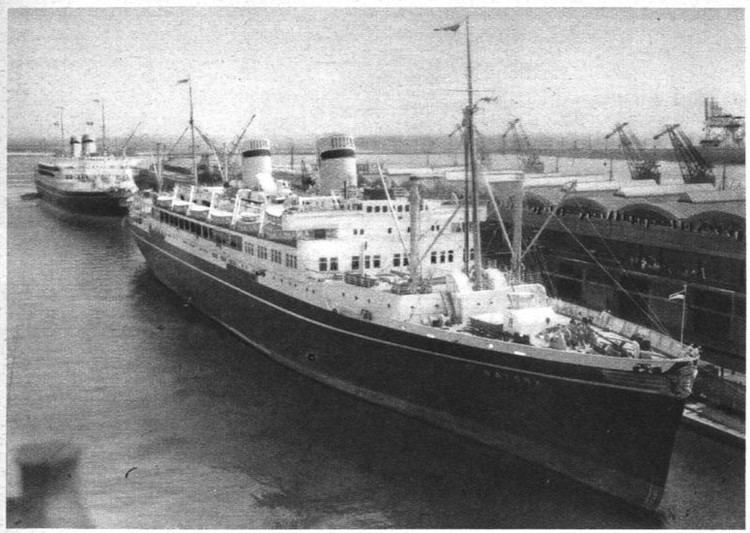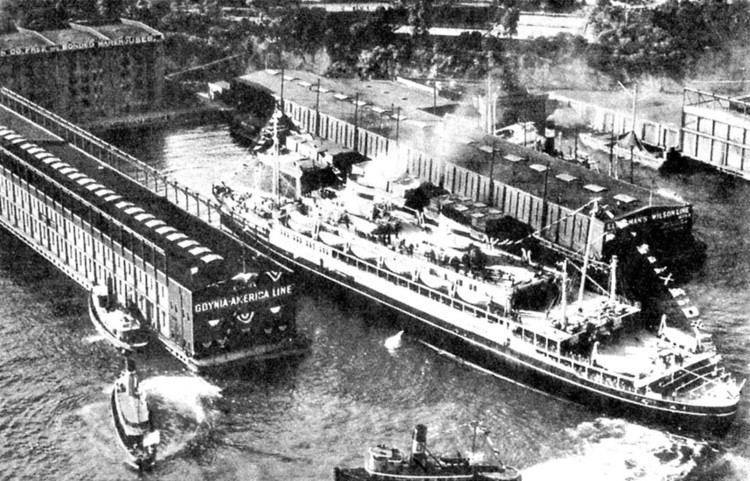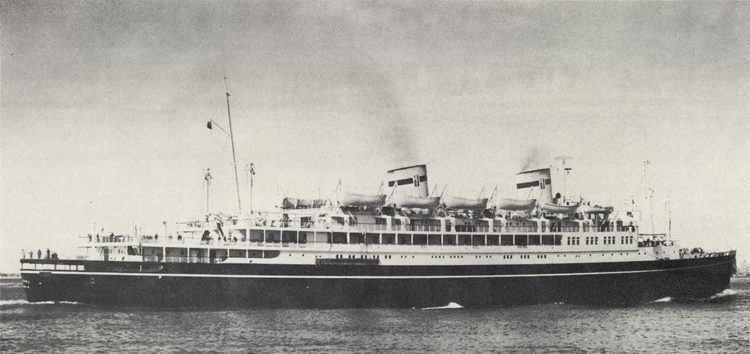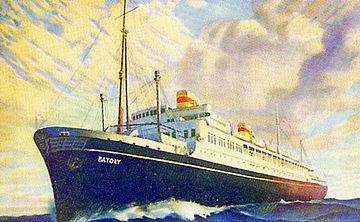Completed 2 Namesake King Stefan Batory Ordered 29 November 1933 Launched 3 July 1935 | Name M.S. Batory Port of registry Gdynia, Poland Construction started 1 May 1934 Beam 22 m | |
 | ||
Owner Gdynia-America Line
Polish Ocean Lines Builders Cantieri Riuniti dell'Adriatico, Monfalcone | ||
M.S. Batory was an ocean liner of the Polish merchant fleet, named after Stefan Batory, the famous sixteenth-century king of Poland.
Contents

The liner survived World War II and became known as a "Lucky Ship" due to her wartime successes. She took part in many military actions, including evacuation of the French-Polish-British corps from Narvik (1940), evacuation of allied troops from St. Nazaire and St. Jean de Luz (1940), invasion of Algier and Sicily (1942), military voyages to India (1943), six months services as a troop carrier from Egypt to Italy (1943), and the invasion of southern France.
During many years of service, Batory carried out 222 round trips across the oceans, first on the New York City run, later the India Line and finally the Canadian Line, carrying over 270,000 passengers altogether. She also performed about 75 cruises, tourist trips, and transportation of children to Poland for summer holidays with over 30,000 passengers taking part. During her wartime service of over six years, she carried about 120,000 soldiers. She visited about 150 ports in all parts of the globe.

Following her services for the country, she became the pride of the Polish Ocean Lines and the Polish navy.

Ms batory
Construction

Batory was built at the Cantieri Riuniti dell'Adriatico Monfalcone Shipyard in Trieste, Italy, under an arrangement where part of her payment was made in shipments of coal from Poland. She was among the most notable tourist attractions of the Polish seaside and among the best-known Polish ships of the time. The vessel was launched on 3 July 1935. The ship was powered by 2 sets of Burmeister and Wain diesel engines driving 2 screws giving a speed of 18 knots. She began regular service in May 1936 on the Gdynia—New York run, and by 1939 she had carried over 30,000 passengers.
World War II

Mobilized at the outbreak of World War II, she served as a troop transport and a hospital ship by the Allied Navy for the rest of the war. In 1940 she, along with MS Chrobry, transported allied troops to Norway. She was also responsible for secretly shipping many valuable Polish treasures to Canada for safekeeping. She participated in the evacuation of Dunkirk late May early June, taking aboard 2,500 persons. Later she carried as many as 6,000 people in one evacuation. In June to July, she secretly transported much of Britain's gold reserves (₤40 million) from Greenock, Scotland to Montreal, Canada for safekeeping. On 4 August 1940 she left Liverpool with convoy WS 2 (Winston's Specials) transporting 480 children to Sydney, Australia, under the Children's Overseas Reception Board for safekeeping until the war was over. She sailed via Cape Town, India, Singapore (where she disembarked 300 troops) and Sydney. The journey had been a happy one, with so much music and laughter that the Batory was dubbed the "Singing Ship" and was the subject of a book of the same name.
She was involved in the invasion of Oran in Algeria in 1942, transported troops to India and the invasions of Sicily and southern France, where she was the flagship of General Jean de Lattre de Tassigny, Commander-in-Chief of the French Army. She came under attack several times from the ground and the air, but managed to escape serious damage.
Dubbed the Lucky Ship for her military career during World War II, she was a sister ship to the less fortunate MS Piłsudski which was sunk in November 1939.
Post war career
Returned to Poland in 1946, she continued her civilian service, transporting such eminent personages as Ryszard Kapuściński. From May 1949 through January 1951, she was the subject of several political incidents in which dockers and shipyard workers in the United States refused to unload cargo from her, or to service the ship by drydocking and painting.
After these incidents, she was withdrawn from the North Atlantic route, refurbished at Hebburn for tropic service, and sailed in August 1951 from Gdynia and Southampton to Bombay and Karachi, via Gibraltar, Malta, Aden, and Suez. In 1957, she returned to the North Atlantic route. She continued in service until 1971, when she was scrapped in Hong Kong.
She was replaced by a larger vessel, TSS Stefan Batory, which began service in April 1969.
